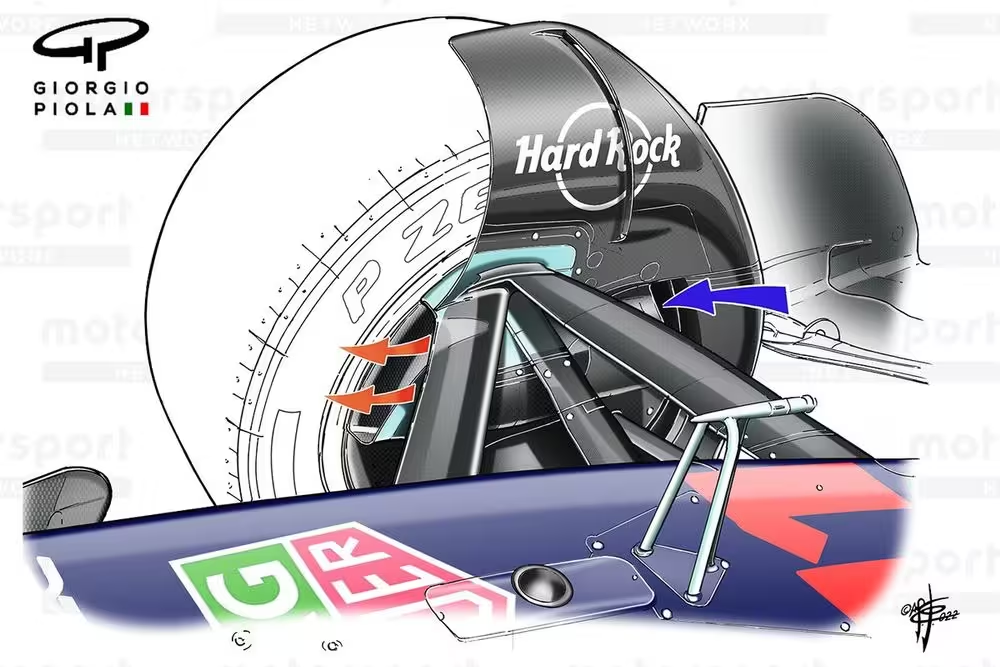The changes made to Formula 1’s regulations were extensive for 2022. While much of the discussion since their introduction has revolved around the design of the sidepods and how teams have best managed the shift to more powerful floors, there’s been plenty of other design aspects that were affected.
These other design aspects have been steadily maturing over that time to improve the overall performance of each machine. One such design feature is the braking system, with several overlapping design disciplines required to extract maximum performance from them.
After all, it’s not only about providing optimal mechanical performance, the brake ducting also needs to provide enough cooling to support it, while also limiting the aerodynamic impact it has on surfaces.
Furthermore, the thermal interaction between the brakes and wheel rim has an impact on both the performance and degradation of the tyres, as the bulk temperature of the tyre can be affected by the transfer of heat between them.
As you’d expect, the general approach taken by the teams is the same, as they’re all constrained by the same regulations, but there’s more than enough scope left over for each team to have their own design DNA, with various solutions emerging even a few seasons on from the inception of these regulations.
And, to recap, the changes made for 2022 were primarily about controlling how heat and airflow escape the assembly, with teams using various design tactics in the previous regulatory era to improve the passage of flow around the wheel assembly.
This included items such as blown axles and crossover pipework within the brake duct assembly that served primarily as a means to improve its aerodynamic output, rather than being required as a means to cool the braking system.
Red Bull Racing RB18 extra brake cooling detail
Photo by: Giorgio Piola
To prohibit these aerodynamic solutions, the regulations no longer permit airflow to escape out of the brake duct’s outer face and out through the wheel rim. Instead, there’s a designated region on the brake duct’s end fence where the hot air is ejected (see the solution on the RB18, above).
This has led to teams creating multiple layers within their brake duct assembly in order that the airflow and heat can be better managed before being expelled from the system.
This nesting system usually consists of pipework that delivers cool air to the calliper and delivers it to the outlet after it has cooled…
Click Here to Read the Full Original Article at Motorsport.com – Formula 1 – Stories…

